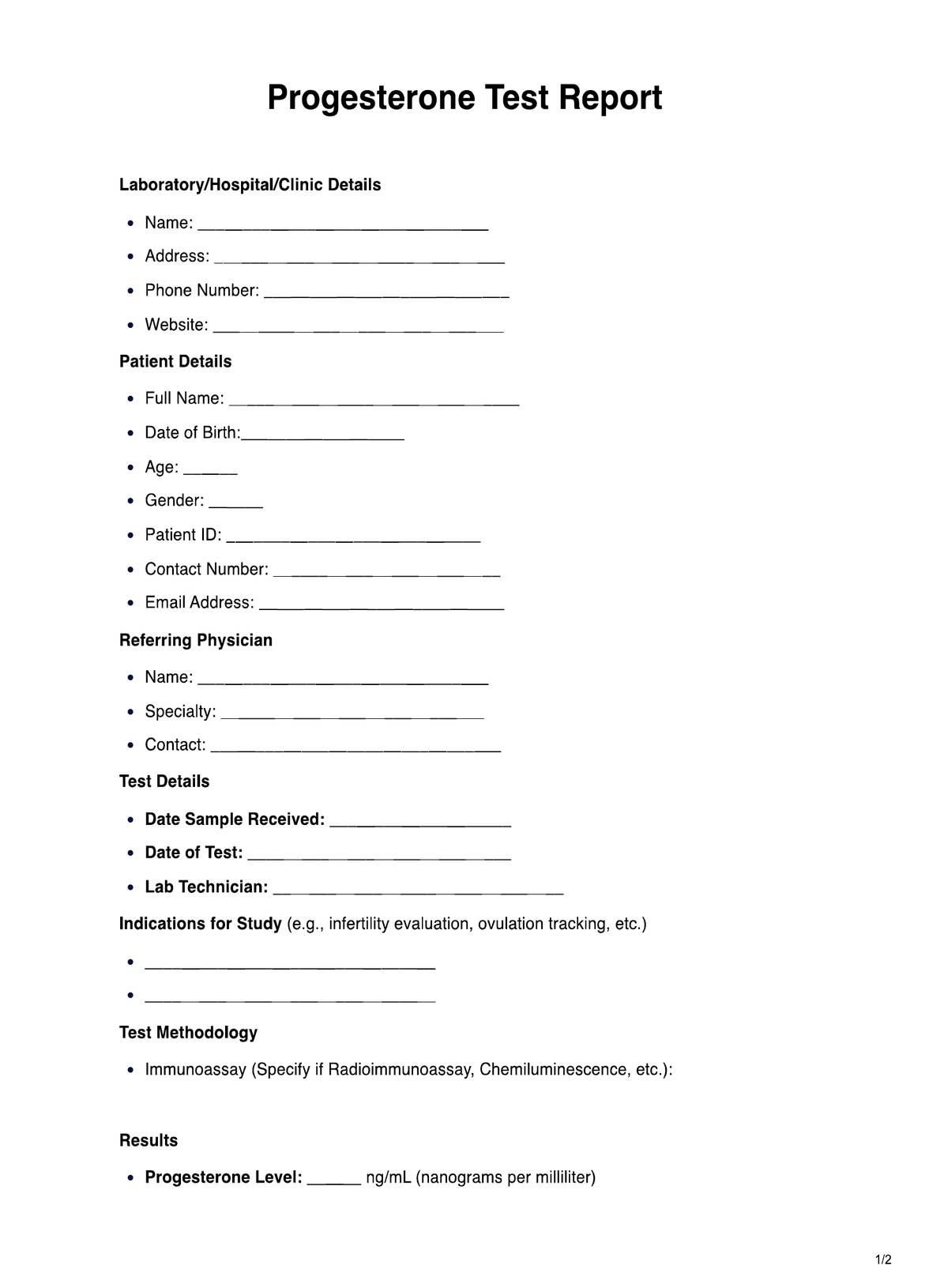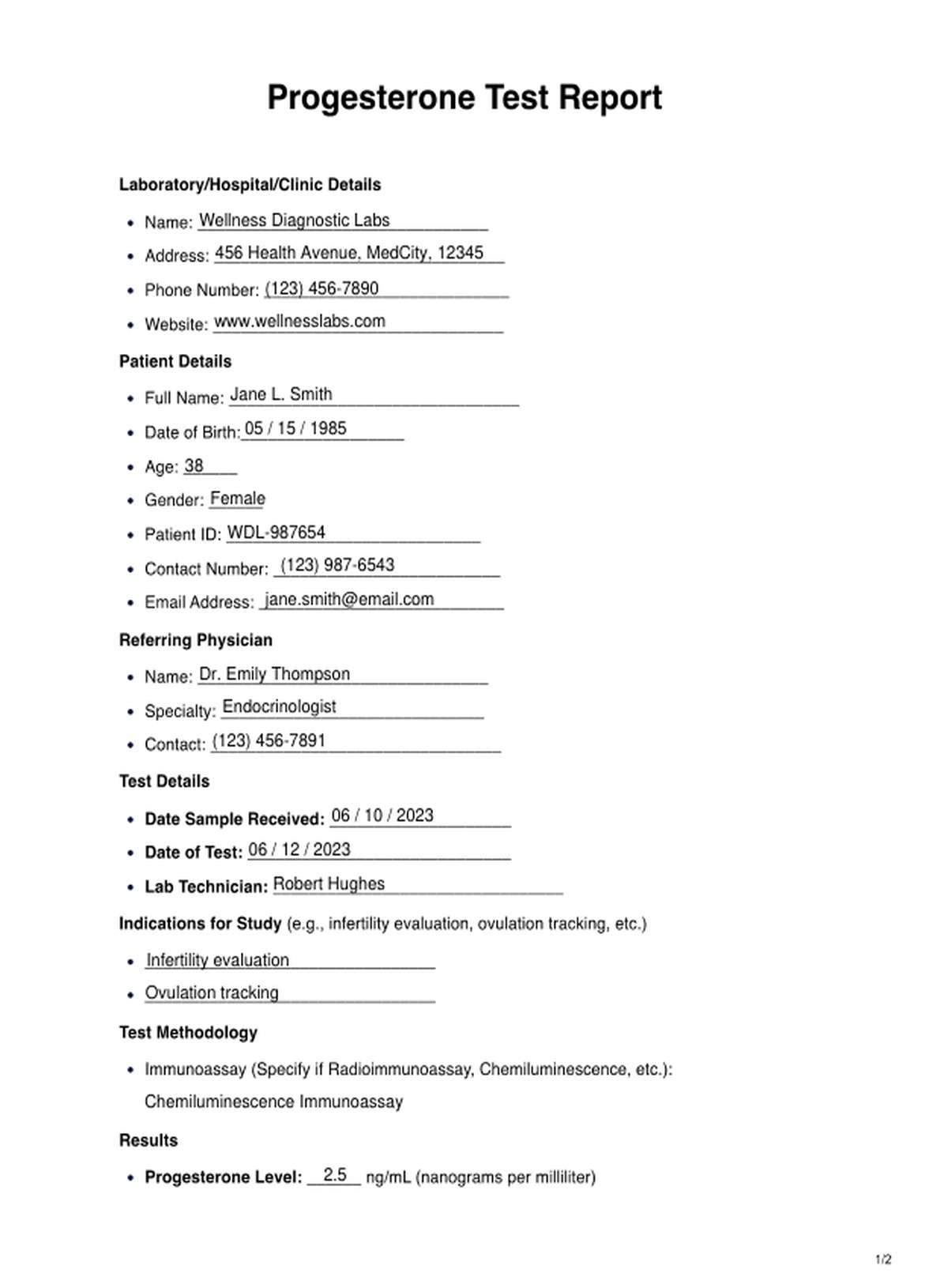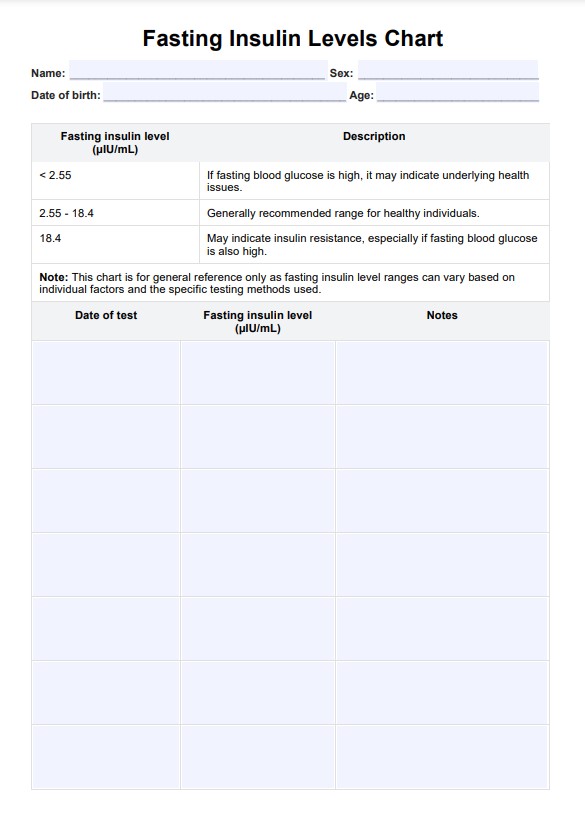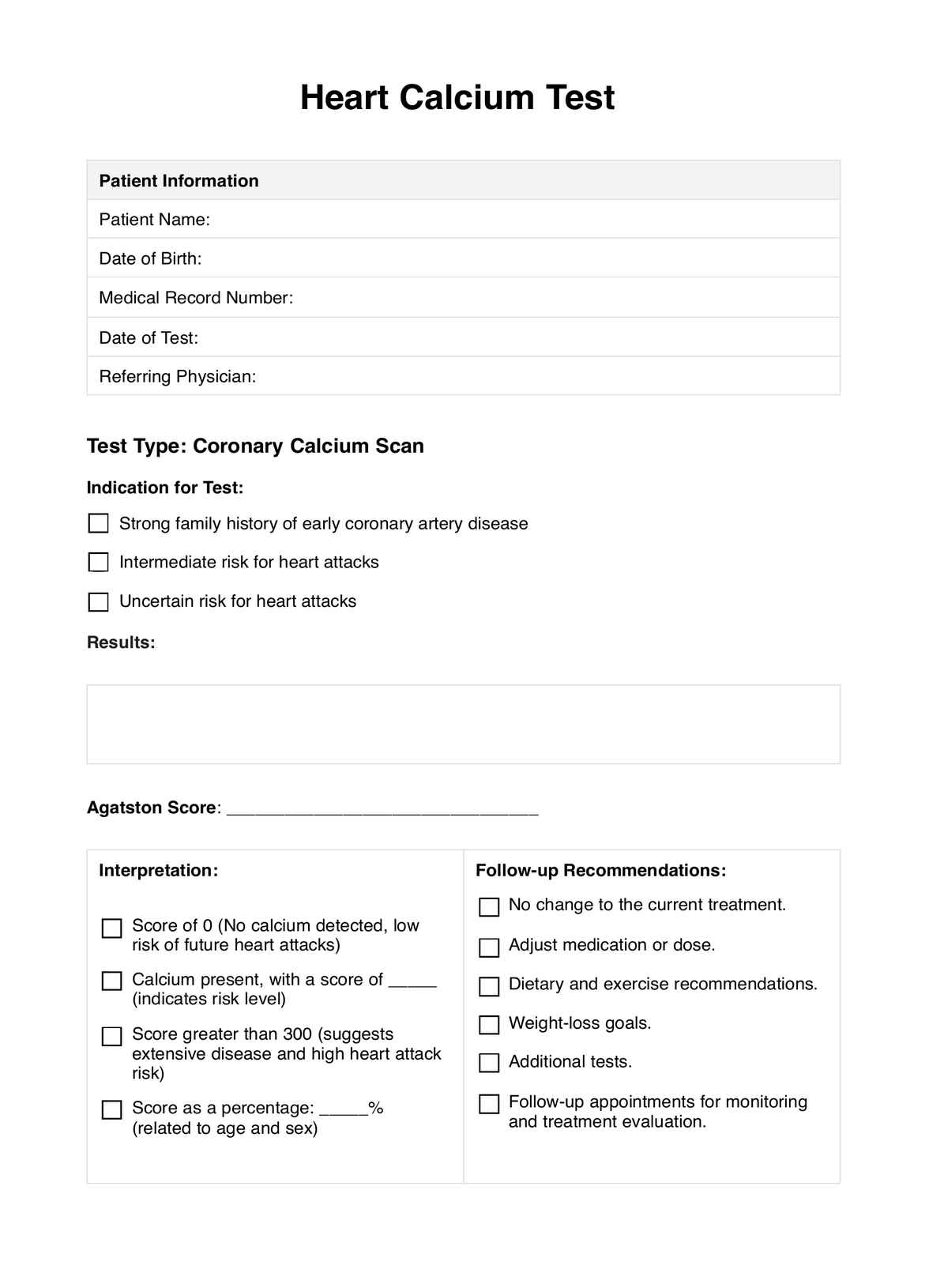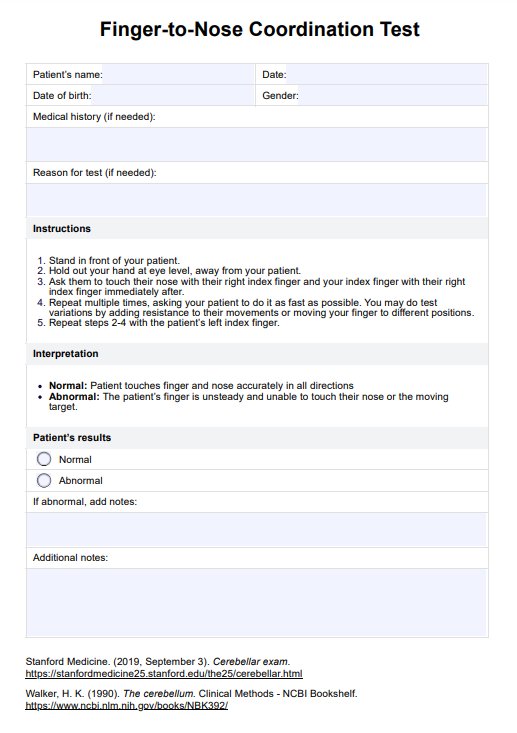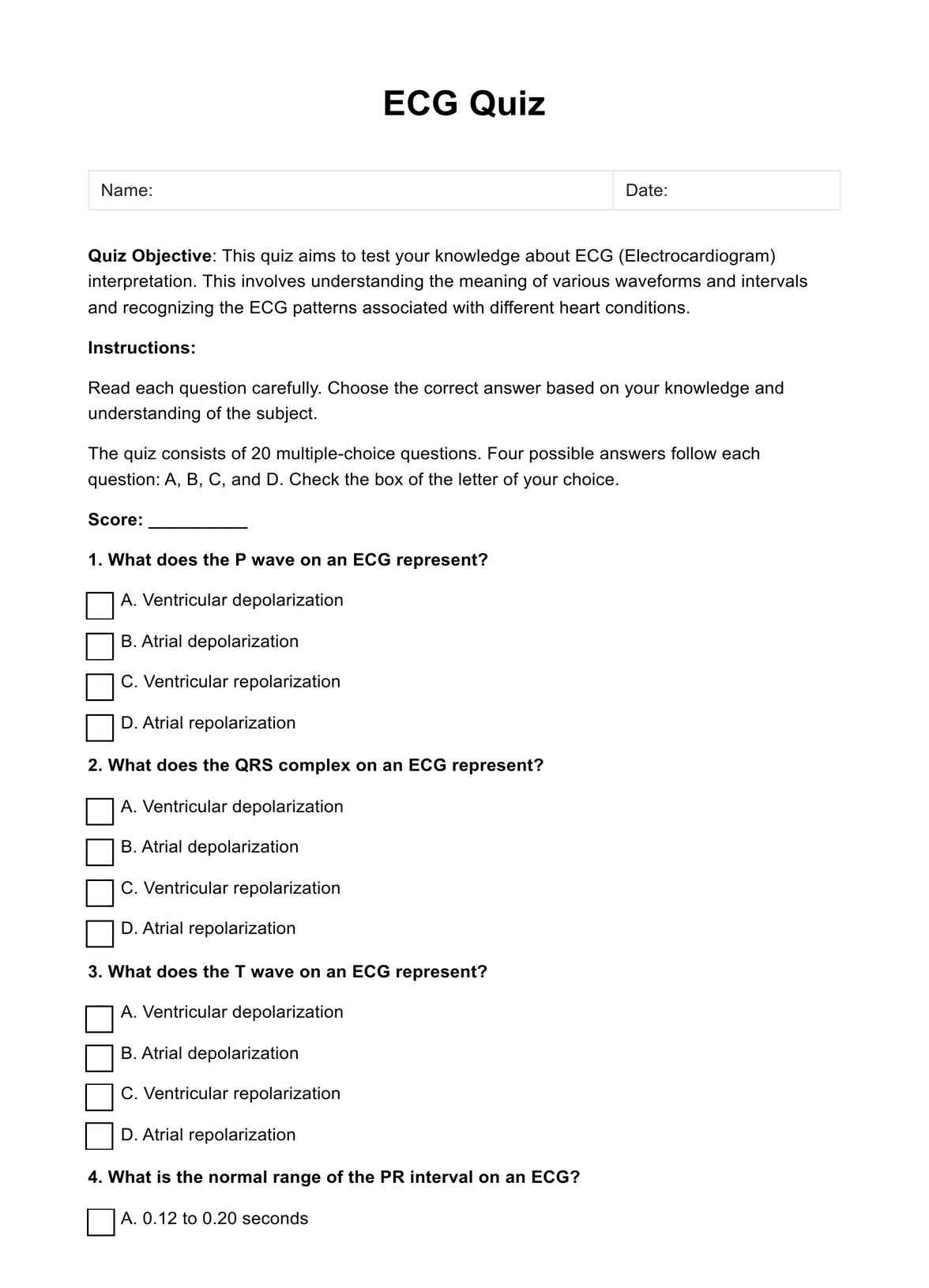Progesterone Test
Understand your fertility with a Progesterone Test. Measure hormone levels, confirm ovulation, and monitor reproductive health. Learn more with Carepatron.


What is a Progesterone Test?
The progesterone test is a key diagnostic tool in reproductive medicine, extensively used to measure the concentration of progesterone, a crucial female hormone, in a blood sample. This hormone, primarily produced by the ovaries, serves critical functions in regulating the menstrual cycle and maintaining pregnancy.
Progesterone levels fluctuate throughout a woman's menstrual cycle, peaking after ovulation. This cyclical nature of progesterone makes its measurement vital in various contexts, particularly in diagnosing potential fertility issues. The test helps healthcare providers confirm if ovulation has occurred, monitor the effectiveness of treatments to induce ovulation and identify the possible causes of infertility.
The utility of this test isn't just confined to human health; it's also an integral part of veterinary medicine. For instance, in canine reproduction, a progesterone test aids in determining the ideal breeding time for dogs, thereby increasing the chances of successful mating.
To comprehensively understand progesterone tests, visit our Progesterone Tests resources page. It is an excellent reference point for anyone seeking deeper knowledge about this diagnostic procedure, whether new to the subject or looking to expand their understanding.
Progesterone Test Template
Progesterone Test Example
How does it work?
The progesterone test involves a few straightforward steps that allow healthcare providers to gauge the level of progesterone in the bloodstream accurately. Here's a detailed look at how this test works:
Step 1: Preparation for the Test
Unlike many medical tests, the progesterone test doesn't require any extensive preparation. You won't need to fast or adjust your diet beforehand. However, informing your healthcare provider about any medications you may be taking is crucial as they could potentially influence the test results. Certain drugs like birth control pills or hormone therapies can alter progesterone levels in the body.
Step 2: Blood Sample Collection
The next step in the process is the collection of the blood sample. A healthcare provider, typically a nurse or a phlebotomist, will perform a standard blood draw. This involves cleaning the skin over a vein (usually on the inside of your elbow), inserting a needle into the vein, and drawing a small amount of blood into a vial or syringe. This procedure is relatively quick and causes minimal discomfort.
Step 3: Analysis of the Sample
Once the blood sample is collected, it's sent to a laboratory for analysis. Skilled lab technicians measure the levels of progesterone using specialized testing equipment. They assess the concentration of this hormone in the blood sample to provide accurate results that aid in diagnosing or ruling out certain medical conditions.
Timing is Key
The timing is an essential aspect to remember about the progesterone test. Since progesterone levels fluctuate throughout the menstrual cycle, the timing of the test can significantly impact the results. It's usually best to take this test about a week before your expected period, during what's known as the luteal phase of your cycle.
If you're interested, you can download our Printable Progesterone Test to help guide you through the process and keep track of your results.
When Would you use this Test?
The progesterone test is vital in various medical and veterinary contexts because it provides valuable insights into hormonal health. Here's an in-depth look at when this test is typically employed:
In Fertility Treatments
One of the primary applications of the progesterone test is in reproductive medicine. Women having difficulty conceiving may undergo this test to determine whether ovulation is occurring. Since progesterone levels peak after ovulation, a low progesterone result can indicate that ovulation isn't taking place as it should. This information is crucial in diagnosing and treating fertility issues.
Additionally, the test can help verify the success of treatments aimed at inducing ovulation. By measuring progesterone levels at specific points during the menstrual cycle, healthcare providers can assess whether the treatment is stimulating ovulation effectively.
During Pregnancy
Once pregnancy occurs, the role of progesterone becomes even more critical. A progesterone test during pregnancy can help monitor the health of the pregnancy, especially in the early stages. Low progesterone levels can sometimes indicate a risk of miscarriage, so regular testing can be beneficial in managing this risk.
In Veterinary Practices
The utility of the progesterone test extends beyond human health - it's also a valuable tool in veterinary medicine. In canine reproduction, determining the optimal time for breeding can significantly increase the chances of successful mating. A progesterone test for dogs can accurately pinpoint the best breeding times, making it an essential tool for breeders.
The progesterone test is an invaluable resource for those navigating fertility challenges, monitoring pregnancy health, or seeking to optimize dog breeding timing. This test is crucial to reproductive health and success by providing accurate, real-time insights into progesterone levels.
What do the Results Mean?
Understanding what your progesterone test results mean can provide essential insights into your reproductive health. However, these results are only sometimes straightforward due to the fluctuating nature of this hormone. Here's an overview of what different progesterone levels might indicate:
High Progesterone Levels
Typically, progesterone levels rise following ovulation during the luteal phase of the menstrual cycle. This increase supports the uterus lining in preparation for a potential pregnancy. If you're pregnant, progesterone levels will continue to rise throughout the pregnancy, supporting the growth and development of the fetus.
High progesterone levels on a test result can, therefore, indicate that ovulation has occurred and the body is correctly preparing for pregnancy. In the context of a confirmed pregnancy, high levels signify that the body adequately supports the pregnancy.
Low Progesterone Levels
Conversely, low progesterone levels may suggest that ovulation is not occurring as it should. This could be due to factors such as polycystic ovary syndrome (PCOS), menopause, or other hormonal imbalances.
During pregnancy, low progesterone levels can potentially signal a problem. Since this hormone is vital in maintaining pregnancy, particularly in the early stages, low levels might indicate a risk of miscarriage or ectopic pregnancy.
Discussing Results with a Healthcare Provider
It's important to note that while these general interpretations apply, individual results can vary significantly. Factors such as age, overall health, and specific circumstances can all influence progesterone levels. Therefore, discuss your test results with a healthcare provider who can accurately interpret them in the context of your unique health profile.
We offer a Free Progesterone Test on our website for those interested in undergoing a progesterone test. This provides a convenient and accessible way to monitor your hormonal health.
Research & Evidence
Progesterone testing has been a cornerstone of reproductive medicine for many years. Its history is rich, with ongoing developments enhancing its utility in clinical practice. A wealth of research supports the importance of this test in diagnosing fertility issues, confirming ovulation, and monitoring the effectiveness of hormonal therapies.
Evidence shows that progesterone and its related molecules are crucial tools in modern clinical practice, particularly within reproductive medicine. For instance, mid-luteal progesterone levels play a significant role in restorative reproductive medicine (RRM), especially in cases where in vitro fertilization (IVF) has failed.
Research also highlights the key function of progesterone within the female reproductive system. Progesterone is critical in breast differentiation and is associated with conditions like premenopausal breast cancer.
In assisted reproductive technology (ART), progesterone testing is used to monitor the dosage of exogenous progesterone treatment after conception. This hormone reaches peak levels during the mid-luteal phase, which is crucial information for practitioners in reproductive healthcare.
Furthermore, progesterone testing is instrumental in preventing threatened miscarriages. Studies have shown a link between a history of miscarriage and progesterone deficiency. Diagnostic tests in reproductive medicine often include progesterone level assessments as part of the fertility work-up.
Overall, the evidence supporting progesterone testing in reproductive medicine is robust and well-documented. Its history and development over time underscore its critical role in this field, making it an essential tool for practitioners and patients.
References
Broughton Pipkin, F., & Warren, M. A. (2005). Diagnostic tests in reproductive medicine. Current Obstetrics & Gynaecology, 15(1), 64-72.
Chabbert-Buffet, N., Meduri, G., Bouchard, P., & Spitz, I. M. (2005). Selective progesterone receptor modulators and progesterone antagonists: mechanisms of action and clinical applications. Human Reproduction Update, 11(3), 293-307.
Coomarasamy, A., Williams, H., Truchanowicz, E., Seed, P. T., Small, R., Quenby, S., ... & Khalaf, Y. (2012). A randomized trial of progesterone in women with recurrent miscarriages. New England Journal of Medicine, 367(22), 2089-2097.
Cowan, L. D., Gordis, L., Tonascia, J. A., & Jones, G. S. (1981). Breast cancer incidence in women with a history of progesterone deficiency. American Journal of Epidemiology, 114(2), 209-217.
Orme, R. M., & Monga, A. K. (2008). Oxford Handbook of Reproductive Medicine and Family Planning. Oxford University Press.
Qin, J., Liu, X., Sheng, X., Wang, H., & Gao, S. (2015). Assisted reproductive technology and the risk of pregnancy-related complications and adverse pregnancy outcomes in singleton pregnancies: a meta-analysis of cohort studies. Fertility and Sterility, 105(1), 73-85.
Stanczyk, F. Z., & Clarke, N. J. (2020). Progesterone: History, facts, and artifacts. The Journal of Steroid Biochemistry and Molecular Biology, 198, 105563.
Tham, E., Liu, J., Innis, S. M., Thompson, D., & Gayet-Ageron, A. (2018). Healthy singleton pregnancies from restorative reproductive medicine (RRM) after failed IVF. Frontiers in Medicine, 5, 210.
Commonly asked questions
Physicians usually request a progesterone test for women experiencing fertility problems or pregnancy complications. Veterinarians may also order this test for breeding dogs.
Progesterone Tests are primarily used to check if ovulation has occurred or to monitor the effectiveness of fertility treatments.
Progesterone Tests measure the level of progesterone in the blood, which can give insights into a woman's fertility and menstrual health.
The test itself is quick, usually taking just a few minutes. However, results may take several days to come back from the lab.

.jpg)
